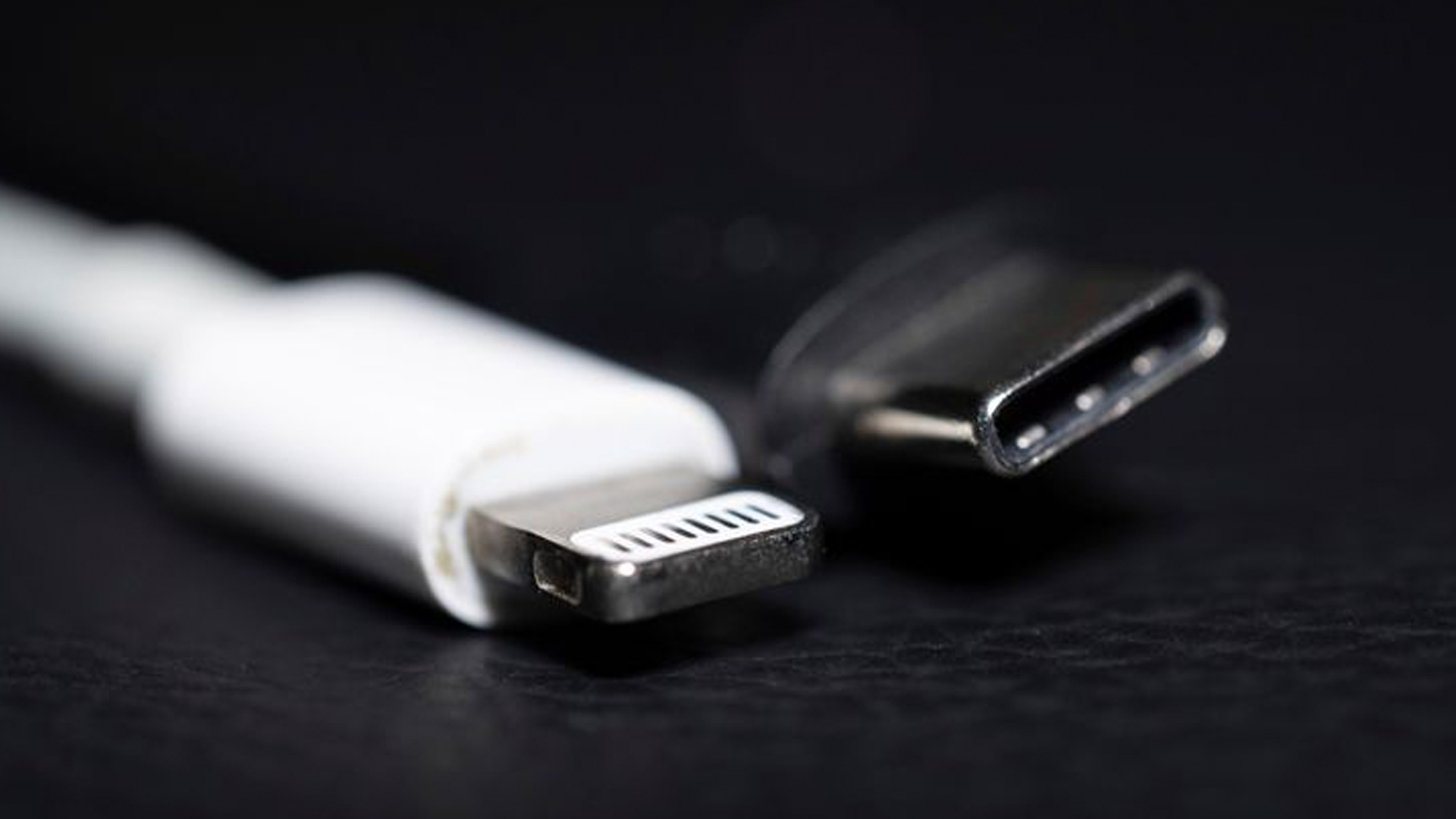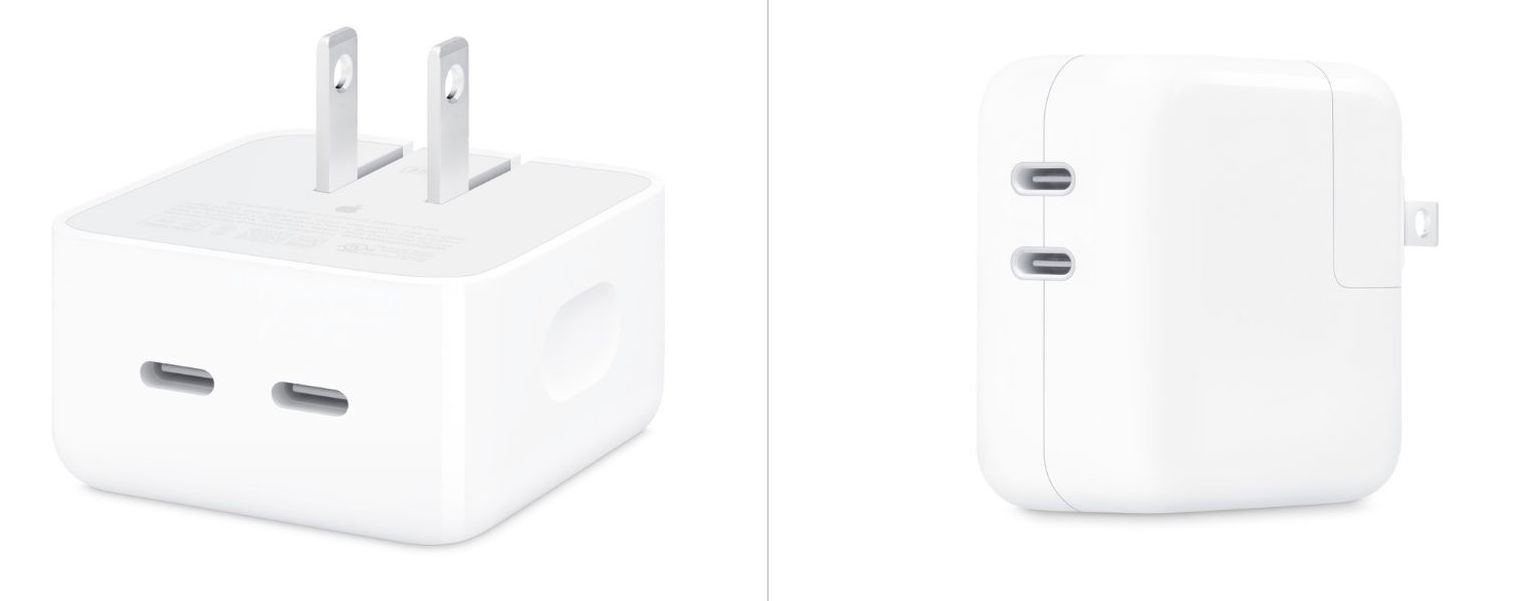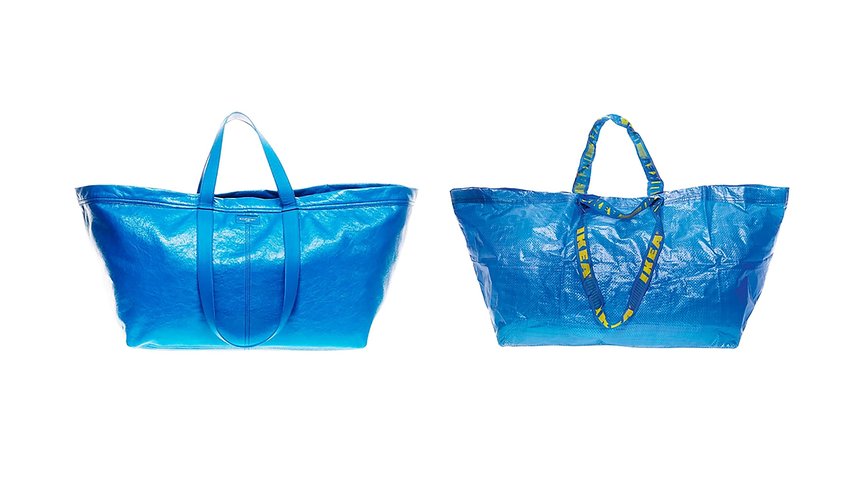So long Apple Lightning charger
Its days are numbered.
So long Apple Lightning charger. As much as we love Apple, its Lightning chargers can be a real headache. The pesky cords only work on Apple products and that often means having to carry around more cables than you'd like to avoid losing juice. Well, the European Union has also had enough and it's finally called time on Apple's proprietary connector.
A full decade after the Lightning cable was introduced, the EU has finally passed a rule that all smartphones must have the same charging port, making all chargers interchangeable. Specifically, the ruling will require all smartphones in the EU to have a USB-C charging port, so it's goodbye to the Apple Lightning charger – at least for those of us in Europe (if you're an Apple user and need to restock on the latest tech, then make sure you check out our roundup of the best Apple deals).

The ruling has been on the cards for some time, although Apple put up a strong fight. European Commission vice president Margrethe Vestager said the aim of the rule was to reduce waste from technology, reducing the number of cables needed. It doesn't affect only phones either – tablets, e-readers, cameras, headphones, handheld games consoles, speakers and headsets will all have to sport the USB-C charging port, allowing cables to be more readily interchanged.
Of course, such a change won't be imposed overnight. Tech producers have two years to prepare, with the USB Type-C port becoming obligatory "by autumn 2024," according to the official statement. The EU claims the move will save consumers up to €250 million.
EU industry chief Thierry Breton said it will also "allow new technologies such as wireless charging to emerge and to mature without letting innovation become a source of market fragmentation and consumer inconvenience" (UPDATE: In October the European Parliament has now approved the proposed legislation in a full vote, making it more certain that the Apple will have to replace the Lightning charger in Europe).

Until now Apple had been allowed to ship its products with Lightning cables in Europe as long as it offered a USB-C adapter. It argued that banning the Lightning cables would actually create more waste because of the amount it's already shipped, but the EU clearly thinks its calculations will work out in the longer term.
The news came just as Apple has just announced its new 35W power adapter with dual USB-C ports (see above). The adapters have the ability to charge two devices at once whether that's two iPhones or your iPad and your MacBook. According to Mac Rumours, the charger will be packed in with the new MacBook Air, and we can see how this now might cause trouble for Apple when distributing to the EU in the upcoming years.
Get the Creative Bloq Newsletter
Daily design news, reviews, how-tos and more, as picked by the editors.
To be honest, we won't be entirely sad to see the Lightning charger go. It could be argued that it's a better design than USB-C. The latter needs larger ports and relies on friction, which slowly disappears with lots of wear, whereas Apple's Lightning cable snaps nicely into place thanks to the grooves in the cable tip. But, Lightning cables are slower, and at the end of the day, we won't miss those days when we have 1% battery left on our phone and the only charger you can find is an Android USB-C. So if you've got an Apple charger, now might be the right time to upgrade to a wireless one. You can find all the best wireless chargers over on our roundup of the best iPhone chargers.
What is a Lightning charger?
If you don't use Apple devices – and haven't used them for like a decade – the Lightning cable is Apple's proprietary connection for hooking up iPhones, iPads, and the late iPod to computers, external monitors, cameras, chargers and the like. It was introduced back in 2012 with the iPhone 5 and then the iPad 4. Ten years on, it remains the standard way to charge and connect most of these devices.
The original cable has a thin reversible Lightning adapter on one end and a standard USB-A adapter on the other, although there are now USB-C adapters and third-party adapters too.
Read More:

Thank you for reading 5 articles this month* Join now for unlimited access
Enjoy your first month for just £1 / $1 / €1
*Read 5 free articles per month without a subscription

Join now for unlimited access
Try first month for just £1 / $1 / €1

Amelia previously worked as Creative Bloq’s Staff Writer. After completing a degree in Popular Music and a Master’s in Song Writing, Amelia began designing posters, logos, album covers and websites for musicians. She covered a range of topics on Creative Bloq, including posters, optical illusions, logos (she's a particular fan of logo Easter eggs), gaming and illustration. In her free time, she relishes in the likes of art (especially the Pre-Raphaelites), photography and literature. Amelia prides herself on her unorthodox creative methods, her Animal Crossing island and her extensive music library.
